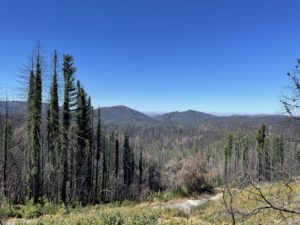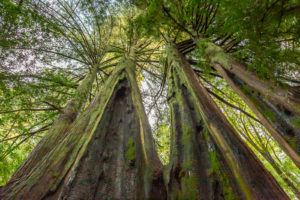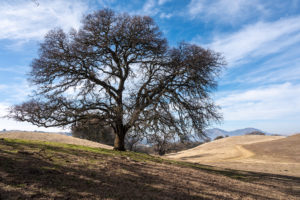Coastal redwoods seem to be doing well in warmer temperatures, according to a recent scientific study by Save the Redwoods League.
But complicating the picture are the results of another recent study showing that the double-whammy of fires and Sudden Oak Death (SOD) are having a detrimental impact on the towering giants.
Researchers from the University of California, Davis have found that the normally fire-resistant trees are having trouble withstanding the intense fires found in forests where the SOD pathogen is prevalent.
“What was interesting was with redwoods, Sudden Oak Death doesn’t kill them and fire doesn’t really hurt them that much except for little redwoods,” explains David Rizzo, a plant pathologist at UC Davis.
“But what we found was that when both were together, we had four times more redwood death in areas with Sudden Oak Death.”
The reason behind this is the increase of fuel levels — woody debris on the forest floor — in forests infected with SOD.
In the aftermath of the Basin complex fire and Chalk fire which burned a combined 179,087 acres in Big Sur in 2008, Rizzo discovered nearly half of the study plots set up to monitor the impact of SOD on the ecosystem were burnt, with severe damage to the trees’ crowns.
“We think what happened is that the fire was transmitted from dead stuff on the ground to dead stuff standing, which then transmitted the fire to the crowns of the redwoods,” said Rizzo. “That then led to their death when normally it would not happen.”
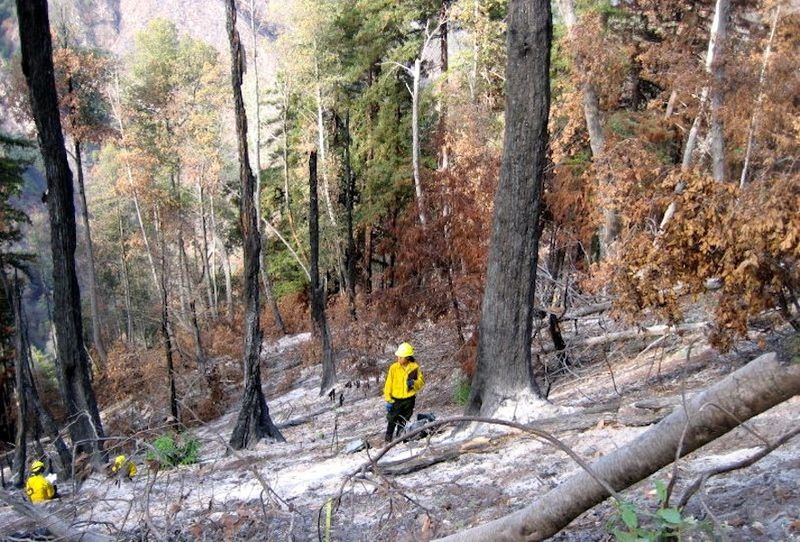
Rizzo’s results back up a 2010 research project from the University of California, Berkeley, which used computer models to predict how SOD might affect the damage caused by forest fires. That study looked at Bolinas Ridge, in Marin, and on Marin Municipal Water District land, which has not seen a recent fire but has a significant amount of SOD.
“The increases were especially noticeable in the smallest size classes of fuels such as twigs,” said Alison Forrestel, one of the researchers in the study who is an ecologist at the Golden Gate National Recreation Area (GGNRA). “Associated with these increases, the fire behavior models predicted increases in flame lengths, heat and spread rate in the case of a wildfire.”
But the equation is not as simple as SOD equals greater fire severity. UC Davis researchers, who published their results in the latest edition of the journal Ecology, discovered that the likelihood of a redwood dying in a forest fire where SOD is present depends on both the age of the tree and the stage of the disease.
Older trees tend to be very fire resistant.
“Redwoods are very fire tolerant and so they can withstand pretty good fires,” said Rizzo. “You see this when you walk around Muir Woods or any place — there are those big fire scars on the old redwoods.”
Instead, middle-sized redwoods, around 2-feet in diameter, were found to be the most vulnerable to the combined effects of fires and SOD (the young trees tend to die most often in a fire, regardless of infection). And curiously enough, the stage of the disease that had the most impact was the middle stage.
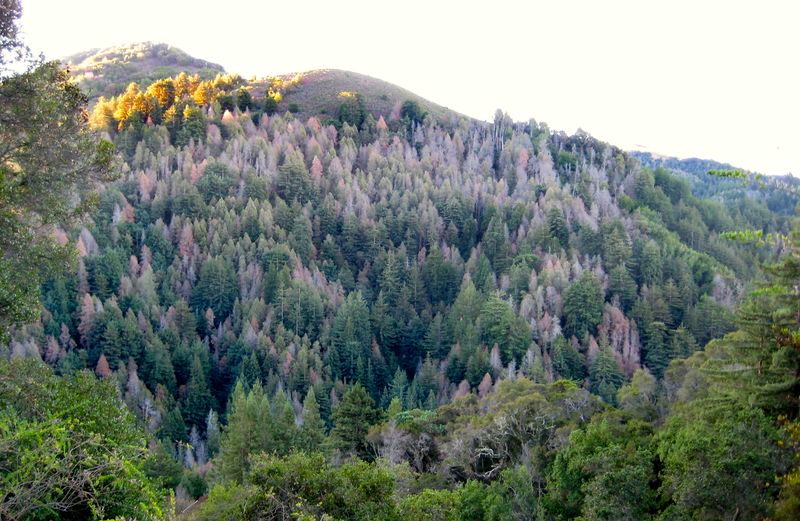
Funded by the National Science Foundation, the study began in 2006 with researchers monitoring forest plots in Big Sur to study the ecology of sudden oak death and its impact on the ecosystem. It was only in 2008 with the Big Sur forest fires that the team’s research changed course.
“You know we didn’t really expect a very large fire and obviously you can’t do an experiment that large,” said Rizzo. “You can’t say ‘Can we burn 250 thousand acres?’ That’s not gonna fly.”
“But it gave us a chance to look and see how Sudden Oak Death related to fire — did Sudden Oak Death make fires worse?”
As researchers continue to answer this question, the one benefit borne from wildfires that has most recently been witnessed in the Morgan fire on Mount Diablo is the opportunity for the forest to regenerate.
“When you come back to some of these spots five years later, the trees are 15 to 20 feet tall, but came from the sprout of a tree that completely burnt up,” said Rizzo. “So from that standpoint, it’s pretty amazing.”
Alessandra Bergamin is a Bay Nature editorial intern.



